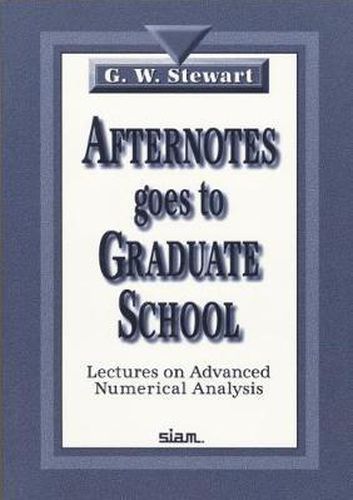Readings Newsletter
Become a Readings Member to make your shopping experience even easier.
Sign in or sign up for free!
You’re not far away from qualifying for FREE standard shipping within Australia
You’ve qualified for FREE standard shipping within Australia
The cart is loading…






In this follow-up to Afternotes on Numerical Analysis (SIAM, 1996) the author continues to bring the immediacy of the classroom to the printed page. Like the original undergraduate volume, Afternotes Goes to Graduate School is the result of the author writing down his notes immediately after giving each lecture; in this case the afternotes are the result of a follow-up graduate course taught by Professor Stewart at the University of Maryland. The algorithms presented in this volume require deeper mathematical understanding than those in the undergraduate book, and their implementations are not trivial. Stewart uses a fresh presentation that is clear and intuitive as he covers topics such as discrete and continuous approximation, linear and quadratic splines, eigensystems, and Krylov sequence methods. He concludes with two lectures on classical iterative methods and nonlinear equations.
$9.00 standard shipping within Australia
FREE standard shipping within Australia for orders over $100.00
Express & International shipping calculated at checkout
In this follow-up to Afternotes on Numerical Analysis (SIAM, 1996) the author continues to bring the immediacy of the classroom to the printed page. Like the original undergraduate volume, Afternotes Goes to Graduate School is the result of the author writing down his notes immediately after giving each lecture; in this case the afternotes are the result of a follow-up graduate course taught by Professor Stewart at the University of Maryland. The algorithms presented in this volume require deeper mathematical understanding than those in the undergraduate book, and their implementations are not trivial. Stewart uses a fresh presentation that is clear and intuitive as he covers topics such as discrete and continuous approximation, linear and quadratic splines, eigensystems, and Krylov sequence methods. He concludes with two lectures on classical iterative methods and nonlinear equations.